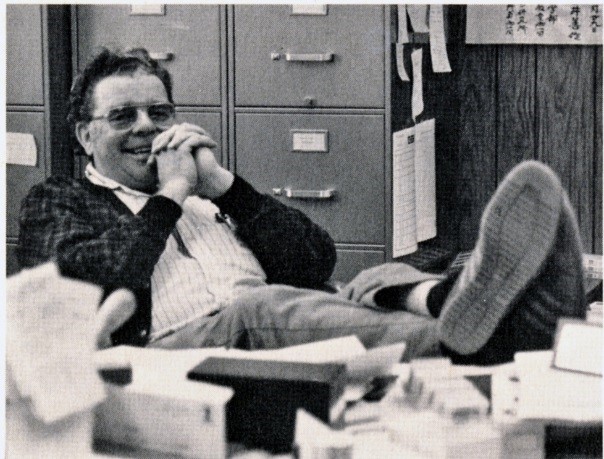
R. Keith Farrell is remembered for his enthusiasm for veterinary medicine and his contagious personal energy. He believed, “If something isn’t fun, it’s not worth doing.” The people he met, worked with, and taught, made his teaching and research a continual joy. Farrell particularly enjoyed his contacts with students through his teaching, and with fellow scientists in research and clinical medicine.
Keith Farrell was born in Bend Oregon, April 10, 1926, graduating from nearby Madras High School in 1943. Farrell earned a B.S. in general agriculture at Oregon State College in 1951 and a D.V.M. from Washington State University in 1955. He was a professor of cryobiology for WSU and a veterinary medical officer for the USDA-SEA. Although his professional career began with microbiological research, his interests moved to endoparasite-transferred diseases, and finally to cryogenics and animal identification. Along the way he advised numerous industry and government organizations and received many commendations for his efforts.
Farrell’s professional life defined the term “cooperation”. Throughout his career, he sought out people with similar interests in viral diseases, endoparasites, toxicology, cryogenics, and animal identification. With these colleagues, he developed programs of basic and applied research. When the research was complete, Farrell became the teacher, and passed the knowledge on to others. All those he encountered were touched by his enthusiasm.
Farrell introduced freeze branding as a painless and effective way of marking animals from fish to Fowl. He also designed symbols to be used in patterns that give a unique number to each animal, the International Identification System.
Working with his wife, Pat, using the technology of cryosurgery, he developed a system of applying a painless, unalterable brand utilizing the Alpha Angle System. When combined with a digitalized method of listing hair, coat, marks, sex, and age, the Alpha Angle System provides an unsurpassed method of animal identification. It has been adopted world-wide in the identification of Arabian horses. All or part of the system has been adopted for various animals in 20 countries around the globe.
Thanks to his pioneering work, WSU is recognized as a world leader in animal identification. Farrell also pioneered the use of cryosurgery for the treatment of horse cancers. He was directly responsible for increasing the equine case load and resulting student exposure to equine tumors, and was renowned for his tenacity in successfully treating “hopeless” cases. He developed the first polyvalent botulism toxoid for mink. He also worked on the distemper vaccination for mink, foxes, and dogs. He designed and developed the equipment necessary to demonstrate the first distemper vaccination by live virus dust vaccine.
Farrell was the first to describe the adult fluke (Nanophyetus salmincola) as a reservoir of the Elokomin fluke fever agent His research on rickettsiae resulted in changes in certain fish processing procedures, directly benefiting people. His research also encompassed the dangers of flea collars. Both animals and people have derived immeasurable benefits from his work.
Give now to the “Dr. R. Keith Farrell Scholarship.” Awarded to a veterinary student with an interest in veterinary cryogenics, toxicology, and/or poisonous plants.
Give now to the “Dr. Keith Farrell Memorial Research Fund.” Provides support for promising innovative projects involving professional or graduate veterinary students.